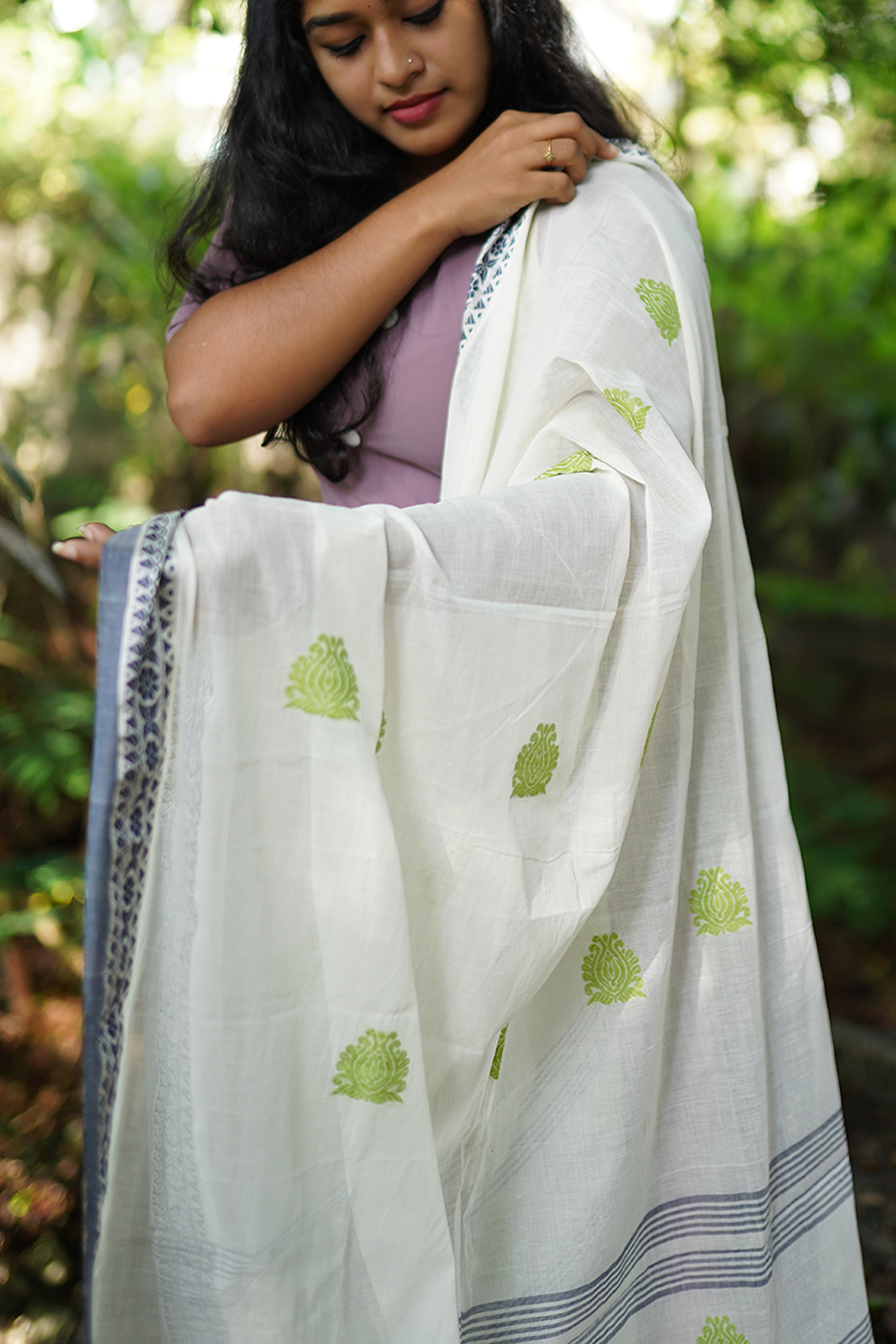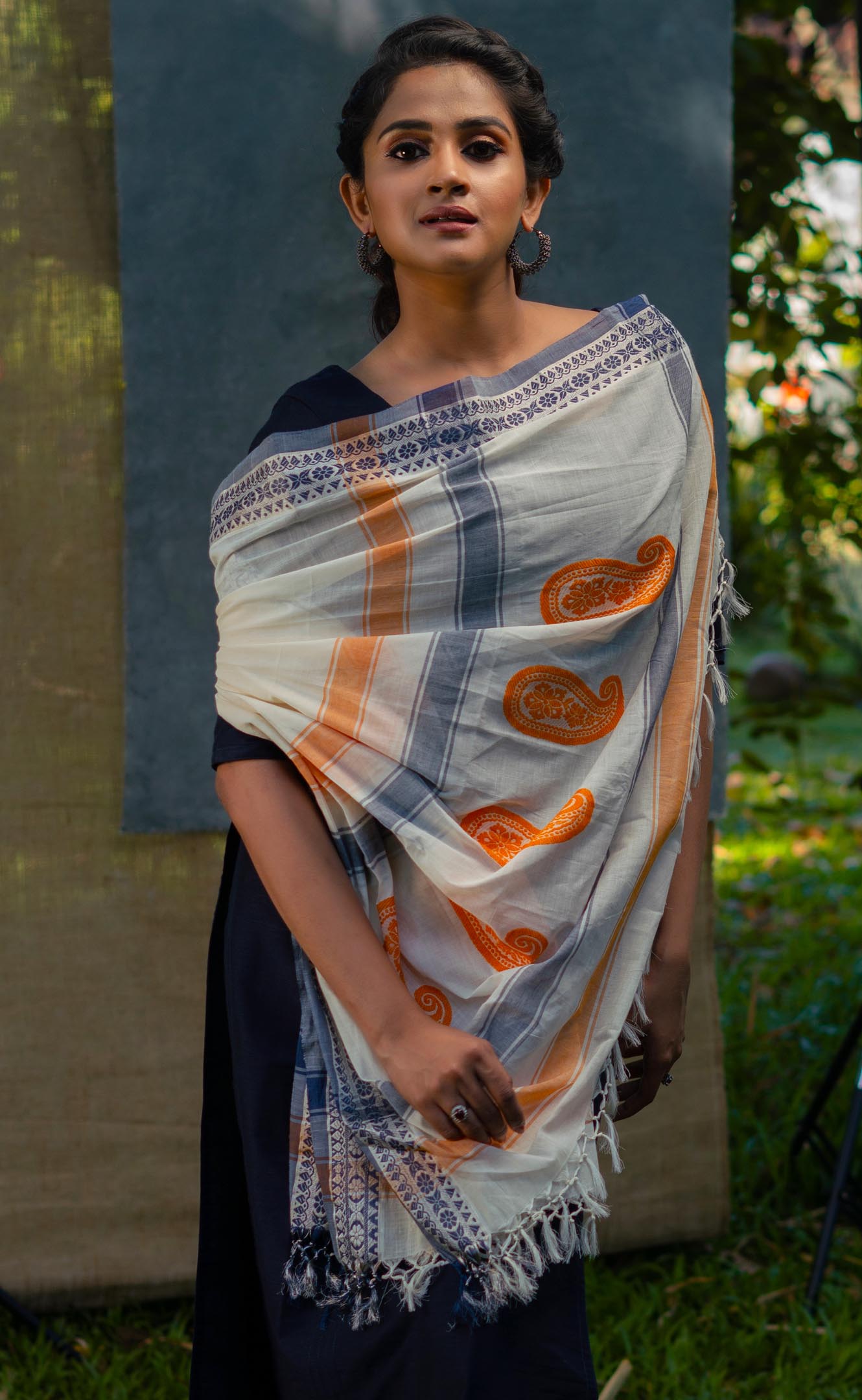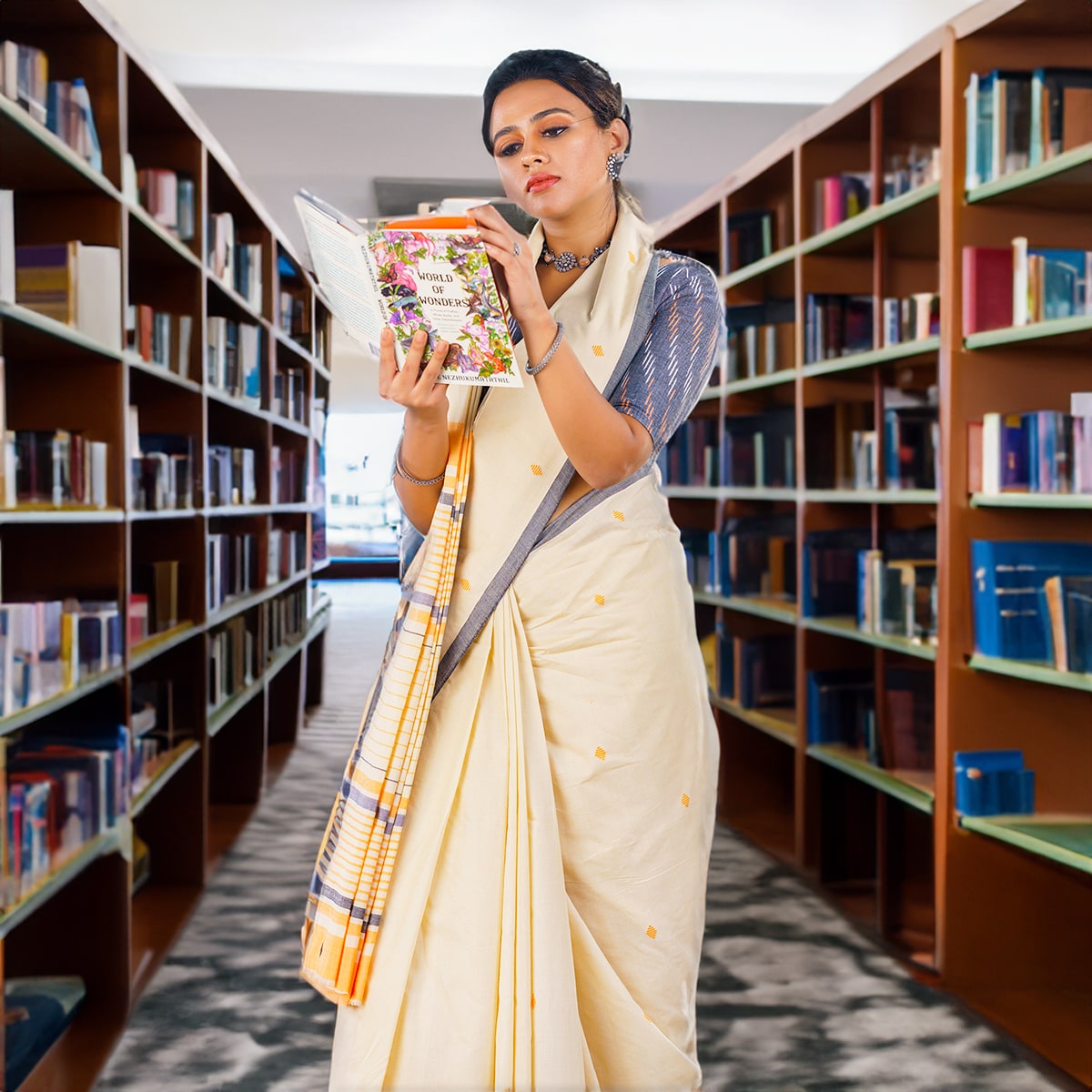Showing all 4 results

Haritham Dupatta
$40.00
Someone said it brings that feeling of sipping a refreshing lemonade when you see this piece! Soothing green and soft fabric give a great feel to this Dupatta. Saravanan and team, our weavers, chose this colour for the Dupatta to show the earth friendly, green spirit behind everything that we do at Graamyam. Story of Weaving: The handloom fabric is a type of fabric that is woven using hand operated looms. Two sets of interlacing yarns, the warp (length) and weft (width), are woven on a loom hand-operated by weavers. These looms do not use electricity. Human handling lends the fabrics a unique feel and renders the fabrics more value. The resultant fabric is softer, more durable and much more comfortable than machine-made fabrics. Handloom cotton is more breathable and thus feels lighter in summers and provides more insulation in winters. The dyeing process also becomes easier for handloom cotton as the colour penetration is substantially more. Hues are absorbed better thus look resplendent on handloom cotton. The art of hand weaving is labour intensive and takes a longer time. But, the beauty it adds to the fabric is priceless. Choosing handloom cotton supports the rich weaving heritage of India and lets the weavers carry on the precious art-form to the future generations as well.

Manayola Dupatta
$40.00
When you watch Kathakali or Theyyam, it is impossible to miss the beautiful hues of orange colour on the performer's face. That colour is extracted from "Manayola", a deep yellow-orange coloured stone. Here you get to wear a Dupatta that has acquired its character from our traditional art forms. Isn't it energising! Story of Weaving: The handloom fabric is a type of fabric that is woven using hand operated looms. Two sets of interlacing yarns, the warp (length) and weft (width), are woven on a loom hand-operated by weavers. These looms do not use electricity. Human handling lends the fabrics a unique feel and renders the fabrics more value. The resultant fabric is softer, more durable and much more comfortable than machine-made fabrics. Handloom cotton is more breathable and thus feels lighter in summers and provides more insulation in winters. The dyeing process also becomes easier for handloom cotton as the colour penetration is substantially more. Hues are absorbed better thus look resplendent on handloom cotton. The art of hand weaving is labour intensive and takes a longer time. But, the beauty it adds to the fabric is priceless. Choosing handloom cotton supports the rich weaving heritage of India and lets the weavers carry on the precious art-form to the future generations as well.

Nila Dupatta
$40.00
Our weavers from Kuthampully, a small village along river Nila, wove this piece of Dupatta. River Nila is the lifeline of this village. Weavers get a lot of inspiration from the river to decide on the designs they weave. Elephants are a common sight in and around the village, brought for the temple festivals. Saravanan, our weaver, has decided on the colour and the majestic design of jumbo woven into the Dupatta. He would like to name it "Nila" as a dedication to the mighty river that flows through their village. Story of Weaving: The handloom fabric is a type of fabric that is woven using hand operated looms. Two sets of interlacing yarns, the warp (length) and weft (width), are woven on a loom hand-operated by weavers. These looms do not use electricity. Human handling lends the fabrics a unique feel and renders the fabrics more value. The resultant fabric is softer, more durable and much more comfortable than machine-made fabrics. Handloom cotton is more breathable and thus feels lighter in summers and provides more insulation in winters. The dyeing process also becomes easier for handloom cotton as the colour penetration is substantially more. Hues are absorbed better thus look resplendent on handloom cotton. The art of hand weaving is labour intensive and takes a longer time. But, the beauty it adds to the fabric is priceless. Choosing handloom cotton supports the rich weaving heritage of India and lets the weavers carry on the precious art-form to the future generations as well.

Saarika Dupatta
$40.00
On a visit to the banks of the river Nila, we saw a group of parrots flying over, across the river to Kuthampully. That sight was mesmerising! We couldn't resist, but to attempt to ingrain that colour into our Dupatta, just for you! Inspired by the sights around the weavers village, we have added the mango design in green on the Dupatta. We are celebrating the nature around the weavers village through this "Saarika" series. Story of Weaving: The handloom fabric is a type of fabric that is woven using hand operated looms. Two sets of interlacing yarns, the warp (length) and weft (width), are woven on a loom hand-operated by weavers. These looms do not use electricity. Human handling lends the fabrics a unique feel and renders the fabrics more value. The resultant fabric is softer, more durable and much more comfortable than machine-made fabrics. Handloom cotton is more breathable and thus feels lighter in summers and provides more insulation in winters. The dyeing process also becomes easier for handloom cotton as the colour penetration is substantially more. Hues are absorbed better thus look resplendent on handloom cotton. The art of hand weaving is labour intensive and takes a longer time. But, the beauty it adds to the fabric is priceless. Choosing handloom cotton supports the rich weaving heritage of India and lets the weavers carry on the precious art-form to the future generations as well.
Showing all 4 results
Related products
View all
Bhoomika Saree
$3500
$3500
This saree with its earthy tones is 'bhoomika', which means earthy. Soft cotton texture gives a comfortable feeling when you wear it. Design of the saree has inspiration from a common bird around us, "chemboth" (Greater Coucal or Crow pheasant)

Sarada Saree
$3600
$3600
Story of Weaving: The handloom fabric is a type of fabric that is woven using hand operated looms. Two sets of interlacing yarns, the warp (length) and weft (width), are woven on a loom hand-operated by weavers. These looms do not use electricity. Human handling lends the fabrics a unique feel and renders the fabrics more value. The resultant fabric is softer, more durable and much more comfortable than machine-made fabrics. Handloom cotton is more breathable and thus feels lighter in summers and provides more insulation in winters. The dyeing process also becomes easier for handloom cotton as the colour penetration is substantially more. Hues are absorbed better thus look resplendent on handloom cotton. The art of hand weaving is labour intensive and takes a longer time. But, the beauty it adds to the fabric is priceless. Choosing handloom cotton supports the rich weaving heritage of India and lets the weavers carry on the precious art-form to the future generations as well.
